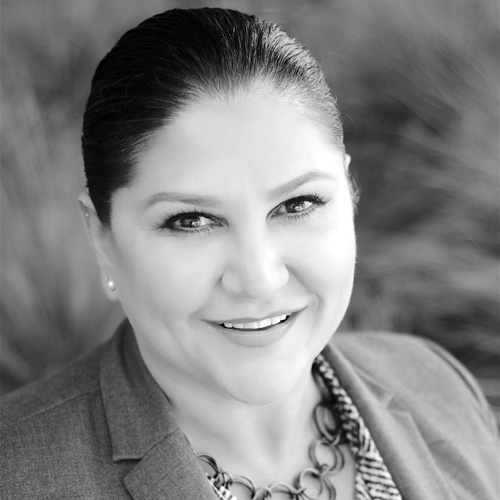When JFK Medical Center launched an expansion of its emergency department in 2013, it turned a single-unit space into one that comprised four separate units ranging from low to high acuity. Because of that change, it was able to solve the issues that had come with growing volume: driving down the need to divert patients to other medical centers and providing increased comfort for both physicians and patients.
But for clinicians that had previously been used to working side-by-side in a single space, the expansion also brought new challenges, particularly in being able to communicate across the new units. Neal Ganguly, vice president and CIO of JFK Health System, saw this as an opportunity to go mobile.
“We were able to say, ‘Look, we’ve got the technology for this, we can use an app to create an environment where the mobile phone can act as a handset on our phone system,’” he says. Because JFK Health had made significant investments in wireless technology as well as a voice-over IP infrastructure, it seemed like a natural transition to give the ER doctors and nurses dedicated devices with a tool kit of apps to improve communications, including an employee directory, physician on-call lists, and access to broadcast messaging and secure texting.
For a seasoned professional who had taken on similar challenges throughout his long career in the healthcare industry—including fourteen years at CentraState Healthcare, where he’d led the development of an IT strategy to support organizational goals—this was a challenge that he and his team were excited to focus on. “Doing this would create a very seamless communication process,” he says.

But the process of building it, he soon learned, was not quite so seamless. The first issue was being able to time the introduction of a new system along with the opening of the new expanded unit, which was set to take place only six months after the idea was approved. This meant that the team had about two months to plan the rollout and identify which tools and underlying structure they would use, followed by two months to build and assemble tools, and two additional months to get them up and running.
First, his team worked to acquire a set of Samsung Galaxy smartphones through the hospital’s cellular service provider, and then customized them for use in a corporate setting by removing nonessential preinstalled apps and limiting those that could be added to the device. Next, they worked to install a new voice-over IP app, directory, and on-call list; from there, they focused on organizing a secure texting environment.
Once the new system was rolled out and implemented, perfecting it took another year. “We were able to develop a pretty strong set of policies and procedures, but we had a lot of technical challenges,” Ganguly says. “Ultimately, we ended up ramping the whole system down to retool it.” Some of the issues were in usability, particularly with the voice-over IP communication piece. Others were more basic: the extra-strong phone casings also had a tendency to distort microphones, and the network connections for the Wi-Fi system needed to be retuned by engineers to optimize them for a corporate environment.
But as Ganguly’s team was retooling the devices, they were also learning from their customers. One lesson was how invaluable the directories and on-call lists were to hospital employees, who eagerly adopted these from the start. More surprising was just how much hospital members needed direct communication—not just within the ER, but throughout the hospital.
“Patient engagement and the world of apps that encourage patient-clinician communications are exploding.”
“While initially we were focusing on physician-to-physician communication, we realized that there’s probably a more urgent need for a nurse-to-physician communication,” Ganguly says. He then expanded the devices to nurses within the inpatient units, as well as to other employees who needed to reach doctors on issues ranging from patient quality to regulatory compliance. And though Ganguly initially thought that physicians might feel bombarded by communications, they have instead been grateful for that connectivity. “They’re feeling like they’re able to close the loop on patient care issues more rapidly,” Ganguly says.
As his team has continued to perfect the mobile system, he’s also seen increased opportunities in it—not just about how it can connect clinicians, but also how other apps might be able to improve patient care. “Mobile is an area we’ve all been looking at because it has such a huge array of applications. Patient engagement and the world of apps that encourage patient-clinician communications are exploding,” Ganguly says. He points to apps that patients are using to monitor their own health, such as FitBit, and notes that information from the growing array of Internet-connected devices can be applied to enable real-time clinical management and intervention.
One application that he’s currently looking to develop would focus on diabetic patients, using technology to monitor physical activity and blood glucose levels and contacting them if they might be at risk. “That way, clinicians can intervene quickly instead of waiting until a month later when that person comes in for their scheduled exam,” Ganguly says.
For him, it’s all part of bringing JFK Medical Center—which has earned Hospitals & Health Networks and HealthForum’s “HealthCare’s Most Wired” award for the past three years—further along into the future. As an active member of the College of Health Information Management Executives, where he also mentors up-and-coming CIOs, Ganguly also hopes that he will inspire others working in his role.
“Although my teams and I don’t directly touch patients, the tools that we provide, support, and maintain are critical to the delivery of healthcare, and I think mobility is going to give us much more data that we can use,” Ganguly says. “How do you begin to mine that data? I think that’s an exciting frontier that I’m excited to see evolve over the next few years.”

